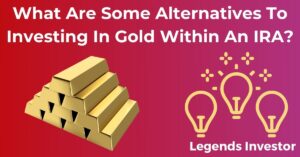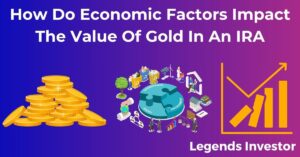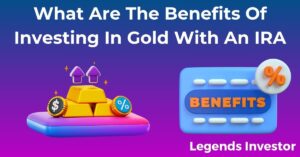Introduction to Precious Metals Investing
Investing in precious metals has intrigued and inspired investors for centuries, from ancient civilizations that revered gold and silver to modern-day portfolios that hedge against economic uncertainties. In this comprehensive guide, we’ll explore the world of precious metals, delving into their historical significance, investment potential, and practical ways to add them to your portfolio. Whether you’re new to investing or looking to diversify, understanding precious metals can offer unique opportunities to grow your wealth.
1. What Are Precious Metals?
Precious metals are rare, naturally occurring metallic elements that have significant economic value due to their rarity, industrial uses, and historical role as a medium of exchange. Commonly known precious metals include gold, silver, platinum, and palladium.
- Gold: Known for its lustrous yellow appearance, gold has been a symbol of wealth and power for millennia. Its malleability, resistance to corrosion, and rarity make it a preferred choice for jewelry and a store of value.
- Silver: With its reflective sheen and conductivity, silver is not only valuable for investment but also widely used in industrial applications like electronics and solar panels.
- Platinum: Rarer than gold and silver, platinum is highly sought after in the automotive industry for catalytic converters, as well as in jewelry.
- Palladium: An emerging metal with high demand, palladium is used primarily in the automotive industry and is becoming increasingly popular as an investment asset.
2. Historical Importance and Value of Precious Metals
Precious metals have held intrinsic value throughout human history. Ancient civilizations, from the Egyptians to the Romans, used gold and silver to create coins, art, and religious artifacts. These metals were seen as a representation of divine favor and social status.
- Gold as Money: Gold has been used as money since at least 600 B.C. Its scarcity and durability made it an ideal medium of exchange. The gold standard, which pegged a country’s currency to its gold reserves, was a dominant monetary system until the 20th century.
- Silver’s Role: Silver, too, has been used as currency and in trade, often referred to as “the poor man’s gold.” Its abundance compared to gold made it more accessible, yet it remained a symbol of wealth.
- Platinum and Palladium: These metals were not widely known or used until the industrial age, when their unique properties made them essential in various technologies.
3. Why Invest in Precious Metals?
Investing in precious metals offers several benefits that appeal to a wide range of investors:
- Hedge Against Inflation: Precious metals, particularly gold, are often seen as a hedge against inflation. As the value of paper currency decreases, the value of gold tends to rise.
- Safe Haven in Economic Uncertainty: During times of economic instability, precious metals often retain or increase their value, making them a safe haven for investors.
- Diversification: Including precious metals in your investment portfolio can help reduce overall risk by diversifying your assets.
- Tangible Asset: Unlike stocks or bonds, precious metals are physical assets that you can hold, giving a sense of security.
4. Types of Precious Metals for Investment
Let’s explore the different types of precious metals you can invest in, each offering unique benefits and characteristics.
Gold: The Gold Standard of Investment
Gold is the most popular and well-known precious metal. It has a long history of being a store of value, and its price is influenced by various factors, including geopolitical events, currency fluctuations, and central bank policies.
- Forms of Gold Investment: You can invest in gold through physical bullion, coins, ETFs, mining stocks, and futures.
- Gold’s Role in a Portfolio: Gold often acts as a counterbalance to stocks and bonds, providing stability during market downturns.
Silver: Affordable and Versatile
Silver is often considered a more accessible entry point for precious metals investing due to its lower price compared to gold. Its dual role as both an industrial metal and a store of value adds to its appeal.
- Industrial Demand: Silver’s use in electronics, solar energy, and other industries can drive its price, making it more volatile than gold.
- Investment Forms: Like gold, silver can be invested in through physical bullion, coins, ETFs, and mining stocks.
Platinum: Industrial Use and Investment
Platinum is a rarer metal with significant industrial applications, particularly in the automotive industry. Its price is often influenced by industrial demand and supply constraints.
- High Value: Platinum is typically more expensive than gold due to its rarity.
- Investment Options: Investors can purchase platinum bullion, coins, or invest in ETFs and mining stocks.
Palladium: Emerging Metal with High Demand
Palladium has seen a surge in demand due to its use in catalytic converters for vehicles. It’s a lesser-known metal but has gained attention from investors looking for growth opportunities.
- Growing Demand: As environmental regulations tighten, the demand for palladium in the automotive industry has driven its price to new highs.
- Investment Potential: Palladium is available for investment through bullion, coins, and ETFs.
5. Understanding the Market Dynamics
The market for precious metals is influenced by various factors that can cause prices to fluctuate. Understanding these dynamics is crucial for making informed investment decisions.
Supply and Demand Factors
The supply of precious metals is limited, with production concentrated in specific regions. For example, South Africa is a major producer of platinum, while Russia is a key supplier of palladium. Demand is driven by both industrial use and investment, creating a delicate balance that affects prices.
- Mining Production: Fluctuations in mining output can impact supply, leading to price changes.
- Industrial Demand: Metals like silver, platinum, and palladium are heavily used in industries, making their prices sensitive to economic cycles.
Market Volatility and Price Fluctuations
Precious metals are known for their price volatility, influenced by factors such as geopolitical tensions, currency fluctuations, and changes in interest rates.
- Geopolitical Events: Wars, sanctions, and political instability can drive investors toward safe-haven assets like gold.
- Currency Movements: Precious metals are often priced in U.S. dollars, so changes in the dollar’s value can impact metal prices.
Economic Indicators and Their Impact on Precious Metals
Economic indicators such as inflation, interest rates, and GDP growth can have a significant impact on precious metals.
- Inflation: Rising inflation often leads to higher demand for gold as a hedge.
- Interest Rates: Higher interest rates can make non-yielding assets like gold less attractive, while lower rates can boost demand.
6. Ways to Invest in Precious Metals
There are several ways to invest in precious metals, each with its own set of benefits and risks. Let’s explore the most common methods.
Physical Bullions and Coins
Physical bullion and coins are the most direct way to invest in precious metals. They offer tangible ownership and can be stored at home or in a secure vault.
- Bullion Bars: These are large, pure pieces of metal, typically gold or silver, that are bought and sold by weight.
- Coins: Coins like the American Gold Eagle or Canadian Silver Maple Leaf are popular among collectors and investors.
Exchange-Traded Funds (ETFs)
ETFs offer a convenient way to invest in precious metals without needing to store physical assets. These funds track the price of a specific metal and can be traded like stocks.
- Gold ETFs: Funds like SPDR Gold Shares (GLD) are popular for tracking gold prices.
- Silver ETFs: iShares Silver Trust (SLV) is a common choice for silver investors.
Mining Stocks
Investing in mining companies provides exposure to precious metals, with the potential for higher returns due to company performance. However, this method also comes with higher risk.
- Gold Mining Stocks: Companies like Barrick Gold and Newmont Corporation are major players in the gold mining industry.
- Silver Mining Stocks: Pan American Silver and First Majestic Silver are popular among silver investors.
Futures and Options
Futures and options are financial derivatives that allow investors to speculate on the future price of precious metals. These instruments can offer high rewards but also come with significant risk.
- Gold Futures: Contracts to buy or sell gold at a future date and price, often used by advanced investors.
- Options Trading: Provides the right, but not the obligation, to buy or sell a metal at a specific price.
7. Risks Associated with Precious Metals Investing
Investing in precious metals, like any investment, comes with its own set of risks. It’s essential to understand these risks before adding metals to your portfolio.
Market Risk
The prices of precious metals can be highly volatile, influenced by various factors like geopolitical events, economic data, and changes in market sentiment.
- Price Swings: Metals like gold can experience sharp price changes, leading to potential losses.
- Economic Downturns: During economic downturns, industrial demand for metals like silver and platinum may decrease, impacting prices.
Liquidity Risk
Liquidity risk refers to the ease with which an asset can be bought or sold without affecting its price. Some precious metals, particularly those in physical form, may be less liquid than others.
- Bullion and Coins: Selling physical bullion or coins can take time and may involve additional costs.
- ETFs and Stocks: These are generally more liquid, but market conditions can still affect the ease of buying and selling.
Counterparty Risk
Counterparty risk arises when the other party in a transaction fails to fulfill their obligations. This risk is particularly relevant in futures contracts and ETFs.
- Futures and Options: The failure of a broker or counterparty can lead to significant losses.
- ETFs: Although rare, the failure of an ETF issuer could impact the value of your investment.
Storage and Insurance Concerns
Physical precious metals require secure storage, which can involve additional costs for vaulting and insurance.
- Home Storage: While storing metals at home gives you direct access, it also increases the risk of theft.
- Professional Vaulting: Many investors opt for secure vaults offered by financial institutions, which also come with insurance options.
8. Developing a Diversified Investment Strategy
Diversification is key to managing risk and achieving long-term financial goals. Including precious metals in your investment strategy can provide balance and stability.
Importance of Portfolio Diversification
A diversified portfolio spreads risk across various asset classes, reducing the impact of any single investment’s poor performance.
- Precious Metals as a Hedge: Metals like gold can act as a hedge against inflation and market downturns.
- Balancing with Other Assets: Including stocks, bonds, and real estate alongside precious metals can enhance overall portfolio stability.
Balancing Precious Metals with Other Asset Classes
While precious metals offer unique benefits, they should be balanced with other asset classes to achieve optimal portfolio performance.
- Equities and Metals: Stocks can offer growth potential, while metals provide stability.
- Fixed Income: Bonds can provide regular income, complementing the capital preservation qualities of precious metals.
Long-Term vs. Short-Term Investment Strategies
Your investment horizon will influence how you incorporate precious metals into your strategy.
- Long-Term Holding: Metals like gold can be held as a long-term store of value.
- Short-Term Trading: More volatile metals like silver and palladium may be suitable for short-term trading.
9. Tax Implications and Legal Considerations
Investing in precious metals comes with specific tax and legal considerations that can impact your overall returns.
Tax Treatment of Precious Metals
Precious metals are subject to capital gains tax, which varies depending on how long you’ve held the investment and your country of residence.
- Short-Term vs. Long-Term Gains: Investments held for less than a year are typically taxed at a higher rate.
- Collectibles Tax: In some jurisdictions, precious metals may be classified as collectibles, leading to higher tax rates.
Reporting Requirements
It’s important to understand the reporting requirements for precious metals investments, particularly when selling or transferring assets.
- Form 1099-B: In the U.S., certain precious metals transactions must be reported to the IRS using Form 1099-B.
- Record Keeping: Maintaining detailed records of your purchases, sales, and transfers is essential for accurate tax reporting.
Understanding Capital Gains Tax
Capital gains tax applies to the profit made from selling precious metals. The rate and applicability of this tax depend on various factors, including the type of metal and how long it was held.
- Calculation of Gains: The difference between the purchase price and sale price, minus any associated costs, is subject to capital gains tax.
- Tax-Efficient Strategies: Strategies like tax-loss harvesting can help minimize your tax liability.
Legal Ownership and Transfer Issues
Understanding the legal aspects of owning and transferring precious metals is crucial, particularly for physical assets.
- Ownership Rights: Ensure that you have clear ownership of any physical metals you purchase.
- Transfer of Assets: Transferring ownership, whether through sale, inheritance, or gifting, can have legal and tax implications.
10. Tools and Resources for Investors
Successful investing in precious metals requires access to reliable tools and resources. Here’s a look at some of the best options available.
Online Platforms and Trading Tools
Online platforms offer convenient access to precious metals markets, providing tools for buying, selling, and tracking your investments.
- Trading Platforms: Websites like GoldMoney and BullionVault allow you to buy and store precious metals online.
- Market Data Tools: Platforms like Kitco provide real-time market data, news, and analysis.
Market Analysis Resources
Staying informed about market trends and analysis is crucial for making informed investment decisions.
- Analyst Reports: Reports from financial institutions and analysts can offer insights into market trends and price forecasts.
- News Outlets: Websites like Bloomberg and Reuters provide up-to-date news on precious metals and related markets.
Educational Courses and Literature
For those new to precious metals investing, educational resources can provide valuable knowledge and guidance.
- Online Courses: Websites like Coursera and Udemy offer courses on investing in precious metals.
- Books: Reading books like “The Goldwatcher’s Guide” or “The Silver Bull Market” can deepen your understanding of the metals market.
Professional Advice and Financial Planners
Consulting with a financial planner or investment advisor can help you develop a personalized strategy for investing in precious metals.
- Financial Advisors: Look for advisors with experience in precious metals investing.
- Legal and Tax Advisors: For complex transactions, consider consulting with legal and tax professionals to navigate potential pitfalls.
11. Conclusion and Final Tips
Investing in precious metals can be a rewarding addition to your portfolio, offering stability, diversification, and the potential for long-term growth. Here are some final tips to ensure your success:
- Recap of Key Points: Remember the benefits of precious metals, the risks involved, and the various ways to invest.
- Common Pitfalls to Avoid: Avoid over-concentration in any single metal, neglecting storage and insurance, and failing to stay informed about market trends.
- Tips for Successful Investing: Stay diversified, consult with professionals, and regularly review your investment strategy.
- Encouragement and Next Steps: If you’re new to precious metals investing, start small, educate yourself, and consider seeking advice from experienced investors.
This outline and content provide a comprehensive guide to precious metals investing, covering everything from the basics to advanced strategies. It offers valuable insights for both new and experienced investors, helping them navigate the complex world of precious metals.



